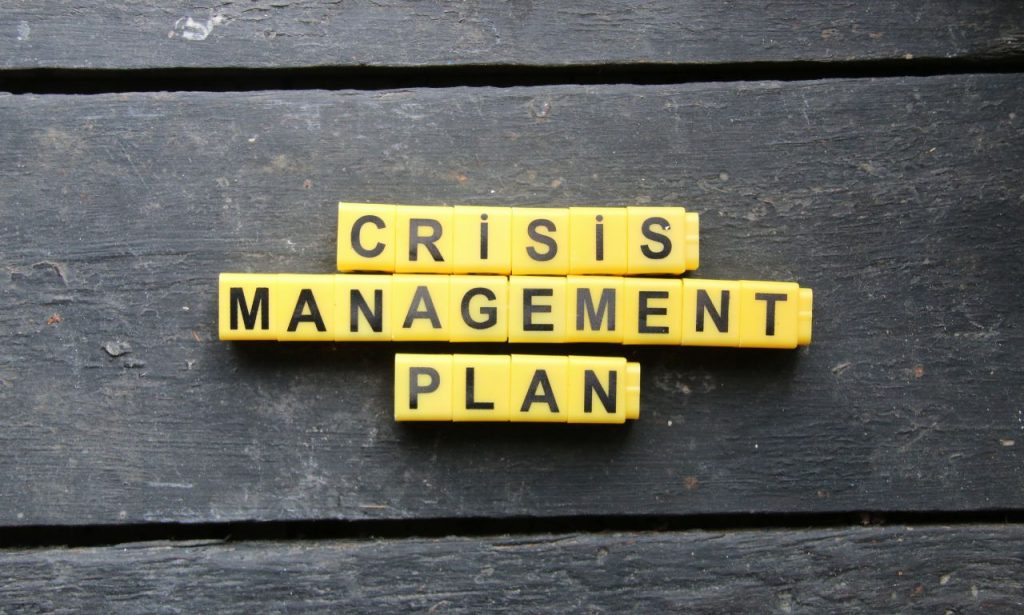In the world of business, threats come from many directions. Some are internal, while others are external. For any business, understanding potential risks is crucial. Without a proper strategy, these risks can disrupt operations, damage reputation, and even lead to the loss of profits. But what are the potential business threats?
Lawsuits
Workers may file a lawsuit for discrimination at work or for wrongful termination. Consumers may allege deceptive advertising or product liability. Intellectual property infringement lawsuits may be filed by rivals. If you violate your lease, even your landlord may face legal action. Settlement costs are not the only financial impact. Legal disputes take time and effort away from your main business operations. They damage your brand by generating bad press. Your leadership team becomes sidetracked from projects aimed at growth. After a legal dispute, insurance premiums frequently rise.
Cyberattacks

No business is too small to be targeted, and hackers have automated their attacks to cast wide nets across thousands of potential victims.
Phishing scams continue to grow more sophisticated. Attackers design emails that mimic legitimate communications from banks, vendors, or your CEO. One clicked link can give criminals access to your entire network. They exploit human psychology rather than technical vulnerabilities.
Ransomware attacks have become particularly devastating. These attacks encrypt your critical data and demand payment for its release. Even if you pay, there’s no guarantee you’ll regain access. Many companies found their backups were also compromised in the attack.
Data breaches create both immediate and long-term problems. Exposing customer information can result in potential regulatory fines, and the cost of notifying affected parties adds up quickly. The most damaging loss is customer trust, which can take years to rebuild.
Workplace Incidents
Physical accidents can lead to injuries, workers’ compensation claims, and regulatory investigations. Violence between employees creates liability issues and damages morale. Sexual harassment allegations can spark lawsuits and destroy company culture. Employee theft remains a persistent problem across industries. The Association of Certified Fraud Examiners reports that businesses lose 5% of annual revenue to fraud, including embezzlement, inventory theft, and time theft. Trusted employees with access to financial systems pose the greatest risk.
Elevated turnover rates indicate more serious issues within the organization. Every employee who leaves takes institutional knowledge with them. Training new hires, holding interviews, and advertising jobs are all examples of replacement costs. During transitions, productivity declines.
A toxic workplace culture is a silent killer of businesses. It results in higher turnover, higher absenteeism, and decreased productivity. Employees put forth the least effort when they feel unsafe or underappreciated; when people are afraid to voice their new ideas, innovation stalls.
Health Threats
The COVID-19 pandemic taught businesses hard lessons about health threats. Companies that lacked remote work capabilities struggled to maintain operations, and those without clear communication protocols created confusion and anxiety among employees.
Infectious disease outbreaks represent just one category of health threat. Environmental hazards like poor air quality or toxic materials can create long-term liability issues. Mental health challenges among your workforce can reduce productivity and increase turnover.
Creating a culture of health and safety pays dividends. When employees feel protected, they demonstrate greater loyalty and engagement. They take fewer sick days and show higher productivity. They become advocates for your company in the talent marketplace.
Supply Chain Disruption
Political tensions, natural disasters, and transportation issues can all break critical links in your supply network. The just-in-time inventory model leaves little margin for error when suppliers face problems.
Single-source dependency creates a particular risk. I’ve seen manufacturing businesses shut down production lines when their sole component supplier experienced a factory fire. Diversifying suppliers adds some cost but provides insurance against disruption.
Transparency throughout your supply network matters enormously. Many businesses discover third or fourth-tier suppliers only after problems arise. Mapping your entire supply chain helps identify potential weak points before they break.
Theft of Physical or Intellectual Property

Despite technological advances, physical theft remains a significant business threat. Retail businesses lose billions annually to shoplifting and employee theft, and equipment theft from construction sites or warehouses creates immediate operational challenges.
Intellectual property theft often causes even greater damage. Your proprietary processes, customer lists, and product designs represent years of investment. Competitors who steal this information gain an unfair advantage without the associated development costs.
Former employees present a particular risk to intellectual property. They leave with knowledge of your systems, strategies, and innovations. Non-compete and non-disclosure agreements provide some protection, but enforcement can be difficult and expensive.
International intellectual property theft has become increasingly sophisticated. State-sponsored hackers target valuable innovations across industries; even small businesses with unique technology or processes have become targets.
Cash Flow Disruptions
Cash flow problems kill more businesses than profit problems. You might show excellent profitability on paper while struggling to pay this month’s bills. Customer payment delays, unexpected expenses, or seasonal fluctuations can all create cash crunches.
Economic downturns amplify cash flow challenges. Customers take longer to pay invoices. Banks tighten lending requirements just when you need credit most. Fixed costs remain while revenue decreases. Even strong businesses can fail during these periods without adequate cash reserves.
Ways to Be Prepared
Record Management
Thorough record management offers insight and protection. Keeping well-organised financial records aids in preventing tax audits. By recording employee incidents, you can produce proof for future legal actions. Monitoring consumer interactions shows adherence to laws protecting consumers.
Digital record management systems offer significant advantages over paper systems. They provide redundant backups to protect against physical damage, enable quick searching during information requests, and automate retention schedules to comply with regulations.
Records serve as your business memory. They reveal patterns and trends that might otherwise remain hidden. They capture institutional knowledge that survives employee turnover. They provide continuity during leadership transitions.
The most effective record management systems balance comprehensiveness with usability. Capturing everything without organization creates information overload. Focus on documenting decisions, agreements, and unusual events. Create clear naming conventions and folder structures.
Training & Seminars for Handling Threats in the Workplace
Training employees to recognize potential threats creates an early warning system throughout your organization. Frontline workers often notice problems before management. Empowering them to report concerns can prevent small issues from becoming major disasters.
Cybersecurity training delivers exceptional return on investment. Teaching employees to recognize phishing attempts and follow security protocols prevents costly breaches. Regular simulated phishing tests reinforce lessons and identify training needs.
Emergency response training prepares your team for crises. This includes fire evacuation procedures, active shooter responses, and medical emergency protocols. When employees know exactly what to do in emergencies, they react more effectively and reduce potential harm.
Leadership training specifically focused on threat response improves organizational resilience. Managers need communication skills during crises, making decisions with limited information and supporting team members through difficult situations. These capabilities rarely develop naturally without targeted development.
The most effective training programs include both initial instruction and regular refreshers. They combine different learning modalities, including classroom instruction, hands-on practice, and digital resources, and they adapt to address new threats as they emerge.
Policy for Workplace Issues
Well-crafted policies establish boundaries and expectations. They provide consistency across the organization. They demonstrate your commitment to maintaining a safe, productive workplace. They create defensible positions in potential legal situations.
Essential policies include a code of conduct, anti-harassment, confidentiality, and security requirements. Each policy should clearly state expectations, consequences for violations, and reporting procedures. Policies require regular updates to address emerging issues and changing regulations.
Policy effectiveness depends on consistent enforcement. The selective application creates liability risks and damages morale. Managers need training on policy implementation and documentation of violations. Anonymous reporting mechanisms help identify issues that might otherwise remain hidden.
Communication matters as much as content. Policies buried in employee handbooks rarely influence behavior. Regular discussion during team meetings reinforces important policies. Visual reminders in work areas keep key requirements visible. Digital policy libraries provide easy reference.
Prepare a Crisis Management Plan

Crisis management plans to provide structure during the chaos. They outline communication protocols, decision-making authority, and resource allocation procedures. They establish priorities for different scenarios. They reduce response time when immediate action matters most.
Effective plans address diverse scenarios, including natural disasters, cyberattacks, workplace violence, and public relations crises. They identify essential business functions that must continue during disruptions and designate alternate operating locations if primary facilities become unusable.
Communication planning is a critical component. Your plan should identify spokespersons for different audiences, including employees, customers, media, and regulatory agencies. It should also include pre-approved message templates that can be quickly customized during crises.
Regular testing improves plan effectiveness. Tabletop exercises walk leadership teams through hypothetical scenarios. Full-scale simulations test operational responses. Post-exercise reviews identify improvement opportunities before actual crises occur.
Conclusion
Business threats will always exist. The difference between businesses that survive crises and those that fail lies in preparation. Understanding potential threats represents your first step toward building resilience.
The strategies we’ve discussed—comprehensive record management, targeted training programs, clear workplace policies, and detailed crisis management plans—create layers of protection. They won’t prevent every problem, but they’ll help you respond effectively when issues arise.
ALSO READ: What are the Major Factors To Consider When Selling Your Business?
FAQs
Cashflow disruption represents the most common business threat, affecting companies across all industries and sizes. Even profitable businesses can fail when they can’t meet short-term financial obligations.
Review and update your crisis management plan quarterly, with additional reviews following significant business changes or after responding to crises.
Conduct a comprehensive threat assessment identifying your vulnerabilities based on industry, location, size, and business model.
Small businesses should prioritize preparation efforts based on their most likely threats, implementing low-cost measures first and gradually building more comprehensive protection.
Representatives from all major business functions should be included in crisis planning, ensuring diverse perspectives and comprehensive response capabilities.
Meta Description: Discover the potential business threats that could impact your company and learn practical strategies for effectively preparing for and mitigating these risks.




